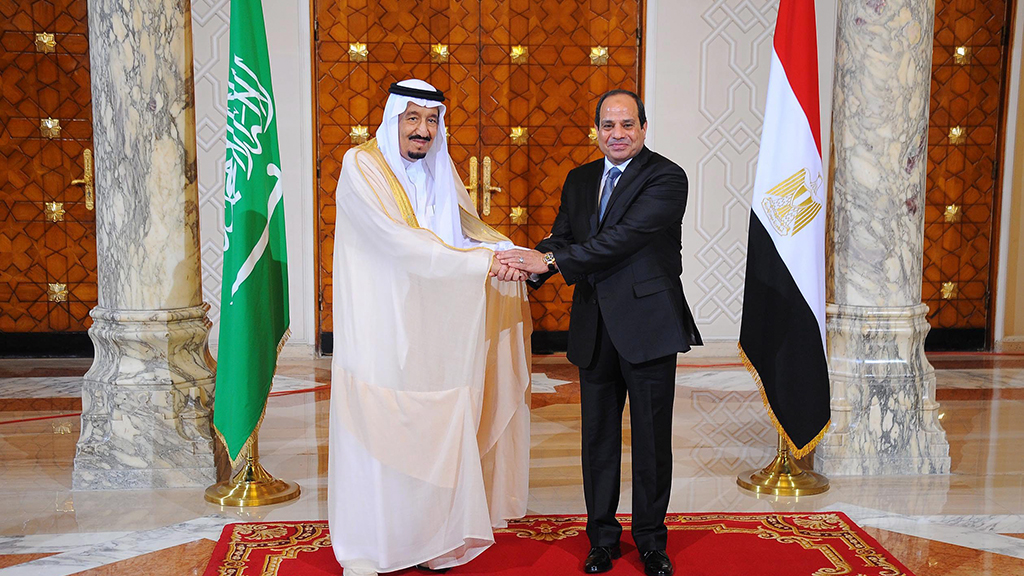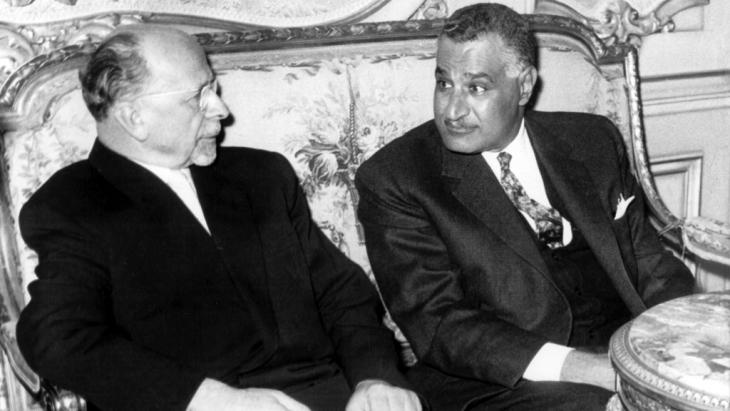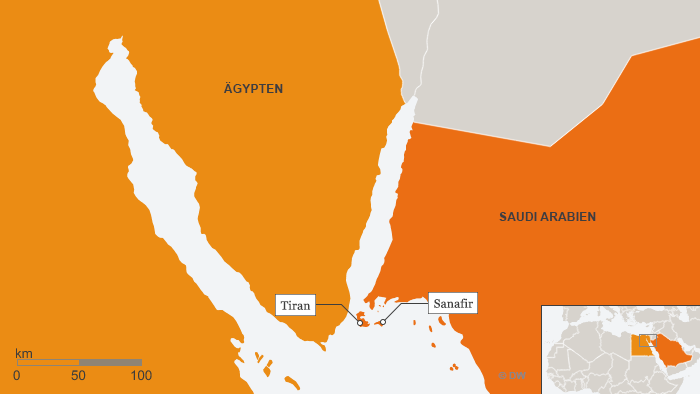Going, going, gone

Last week′s visit to Egypt by King Salman of Saudi Arabia resulted in 22 agreements, including a $22 billion oil deal to prop up Egypt′s moribund economy. But the lavish aid came at a price: Egypt had to relinquish two Red Sea islands ceded to it by Saudi Arabia in 1950. The move exposed the Egyptian leadership′s narrative that the country remains a major regional power as a lie.
Indeed, Egypt cannot even handle domestic challenges posed by a rapidly growing population dependent on unaffordable subsidies – a situation that jihadists are exploiting with much success. How did the country reach this point?
When Muhammad Ali defeated the British in 1807, Egypt became the first Arab country to gain de facto independence. But Ali′s grandson, Ismail, squandered that independence with profligate spending, establishing a dependency on external assistance that persists to this day.
First, Ismail was forced to sell Egypt′s shares in the Suez Canal in 1875 to cover his budget deficits. When that proved insufficient to stop the fiscal haemorrhaging, European creditors established a committee to ensure payment. By 1877, more than 60% of Egypt′s revenue was servicing this debt. In 1882, the British took control of the country to protect their investments.
Soviets welcome
Egypt′s dependence on the British continued until Gamal Abdel-Nasser took power in 1952. He welcomed the Soviets, who provided sophisticated weapons in exchange for the same kinds of IOUs that doomed his predecessor. By the time Nasser died in 1970, the Soviet Navy had transformed the port of Alexandria into a virtual Soviet republic, with Russian spoken as a second language.

Meanwhile, Nasser pursued costly populist economic policies. He expanded the bureaucracy by offering every college graduate a government sinecure; today, 24% of the workforce is employed by the state. He introduced subsidies for commodities, from bread to oil, that amounted to 8.1% of GDP in 2013-2014. In 2014-2015, 81% of the budget went to debt service, subsidies and wages, crowding out education and other investments essential to long-term growth.
All of this intensified Egypt′s need for foreign aid. And, in fact, despite Nasser′s pro-Soviet bent, Egypt was the largest recipient of American foreign aid until its disastrous war with Israel in 1967 froze relations. Unable to challenge Israel militarily, Soviet pilots engaged Israeli adversaries in dogfights over the Suez Canal. Nasser, who railed against imperialism and economic subservience, had delivered his country into vassalage.
Nasser′s successor, Anwar Sadat, attempted to revive Egypt by liberalising the economy, making peace with Israel and abandoning the alliance with the Soviets in favour of the US and Western Europe. He was rewarded with an aid package that averaged more than $2 billion per year. But, with Egypt′s population growing at an annual rate of 2.2%, even this was not enough.

Historical dependence on aid
Today, Egypt also depends on aid from Europe and the Persian Gulf, delivered through, for example, the Arab Fund for Economic and Social Development, the Abu Dhabi Fund for Development and the Saudi Fund for Development. The Kuwait Fund for Arab Economic Development has given Egypt $2.5 billion – more than 50% in the form of grants – making Egypt its largest aid recipient. Such aid props up Egypt′s economy by funding infrastructure projects and providing budgetary relief. The occasional debt write-off also helps.
Egyptians rarely hear about their country′s dire financial straits. Instead, the government-controlled press boasts about new bridges and increased industrial production, while highlighting Egypt′s role in regional affairs, such as the dormant Israeli-Palestinian peace process and the cobbling together of governments in Lebanon.
Such propaganda aims to sustain the myth that Egypt holds a unique and powerful position in the Middle East. To be sure, unlike in most other Arab countries, particularly Lebanon and Yemen, Egypt has a sense of national identity, rooted in the Pharaonic empires of antiquity. And its largely homogenous population – 90% Sunni Muslim – has allowed it to avoid the sectarian conflicts plaguing countries like Iraq and Syria and to forge a strong central government.

Illusion of regional dominance
But the narrative of regional dominance that Egypt′s leaders have fashioned increasingly rings hollow. The 750,000 Egyptians who graduate from college each year want jobs, not empty promises based on past glory. The unskilled labourers in the decimated tourist industry pine for foreigners to return. And factory workers yearn for production levels that local unemployed consumers′ purchasing power cannot sustain.
Instead of delivering on these imperatives, Egyptian President Abdul Fattah el-Sisi has been forced to relinquish territory to the Saudis to secure the aid the country needs to stay afloat, facing considerable mockery in the process. In the zero-sum game that is Middle East politics, however, one party′s loss is another′s gain. And in the case of Egypt today, it is radical Islamists who are reaping the rewards of popular disillusionment with the government.
The Islamists are offering their own narrative: the modern nation-state has failed Arabs and Muslims. This resonates with a population that is experiencing the state′s failure every day. Focusing on restoring past Islamic glory is becoming more appealing than resurrecting a regional power that could never even secure rights for Palestinians.
Egypt′s leaders retain the legitimacy and strength needed to curtail this dangerous narrative. But, if they are to succeed, they will have to acknowledge what Egypt is – and what it is not. In a country where ancient artefacts are deeply cherished, the myth of regional greatness is one relic that should disappear soon.
Barak Barfi
© Project Syndicate 2016
